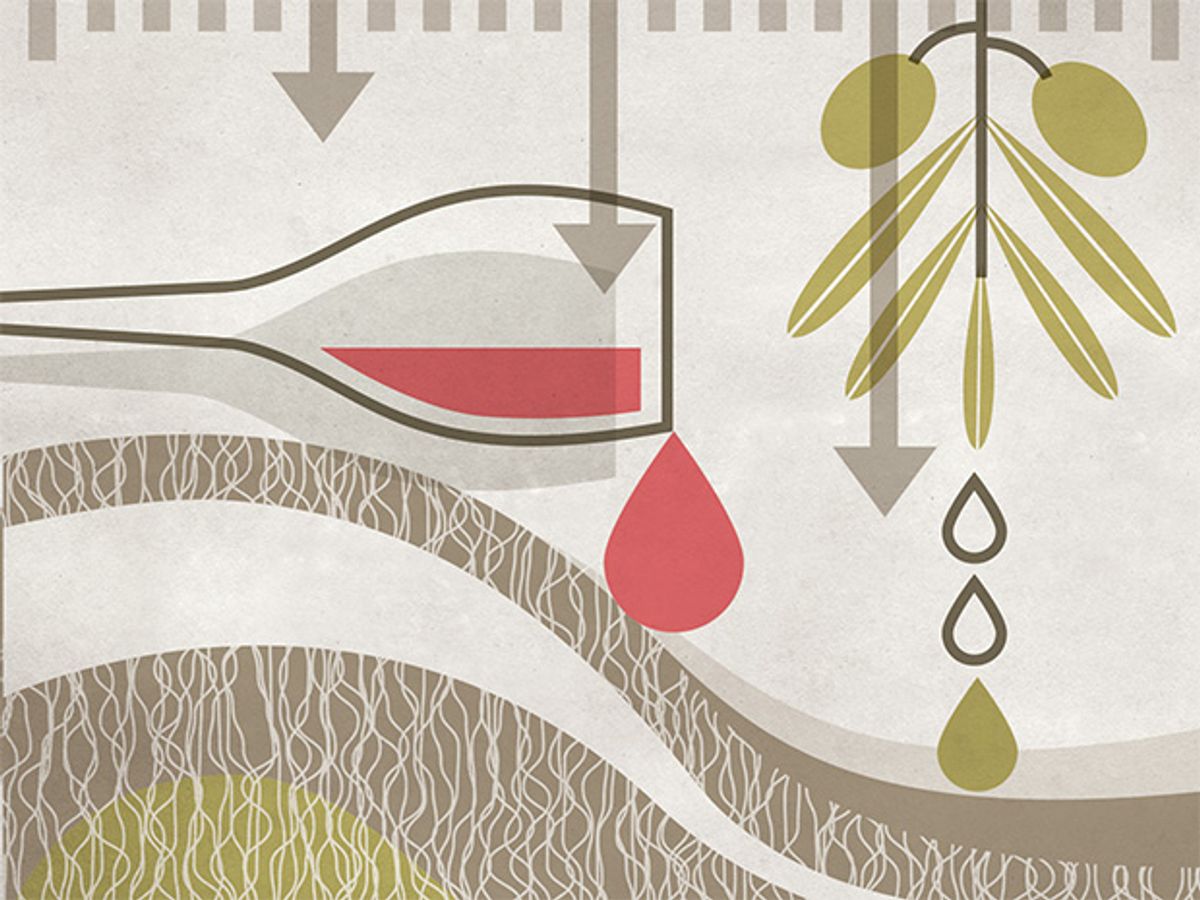The benefits of the Mediterranean diet became widely known after 1970, when Ancel Keys published the first installment in his long-term study of nutrition and health in Italy, Greece, and five other countries and found that the diet was associated with a low incidence of heart disease.
The key traits of the diet are a high intake of carbohydrates (mostly bread, pasta, and rice) complemented by pulses (beans, peas, chickpeas) and nuts, dairy products (mostly cheese and yogurt), fruits and vegetables, seafood, and lightly processed seasonal foods, generally cooked with olive oil. It included much more modest quantities of sugar and of meat. Best of all, plenty of wine was taken with the food.
Not all of the early conclusions have withstood the test of time. But today it is clear that it reduces the risk of cardiovascular problems, cuts the risk of certain cancers by about 10 percent, and offers some protection against type 2 diabetes. There is little doubt that if Western countries, particularly the United States, had followed it en masse they’d never have reached the levels of obesity now prevalent. In 2013, UNESCO inscribed the diet on the list of the Intangible Cultural Heritage of Humanity, with Croatia, Cyprus, Greece, Italy, Morocco, Portugal, and Spain as the designated countries.
Yet even in those havens of health there is a growing problem: The true Mediterranean diet is now eaten only in certain isolated coastal or mountainous outposts. The dietary transition has been rapid and far-reaching, particularly in the two most populous countries of the region, Italy and Spain.
During the past 50 years, the Italian diet has become more Mediterranean only for fruit, the consumption of which went up by nearly 50 percent. Meanwhile, consumption of animal fats and meat trebled. Olive oil now supplies less than half of all dietary fats and—incredibile!—the consumption of pasta is down and that of wine is way down, for a drop of about 75 percent. Italians now buy almost as much beer as rosso and bianco.
The Spanish retreat from the Mediterranean diet has been even faster and even more complete. Spaniards still like their seafood, the consumption of which has increased, but they’ve moved away from grains, vegetables, and legumes. Olive oil now provides less than half of all the country’s fats.
And, remarkably, Spaniards on average now drink only around 20 liters of wine per year—which is less than half the beer they consume. That’s comparable to what you see in Germany and the Netherlands!
Could there be a more potent symbol of the diet’s demise than tinto beaten by cerveza? And even most Europeans (keeping old dietary patterns in their memory) are unaware that the Spanish per capita meat supply, only at about 20 kilograms a year when Franco died, is now, at nearly 100 kg, well ahead of such traditionally carnivorous nations as Germany, France, and Denmark.
And the prospects are not good. A new pattern of eating has become the norm among the young people, who also buy less fresh food than their parents did. Spain, for example, has no shortage of McDonald’s, KFCs, Taco Bells, and Dunkin’ Donuts—or Dunkin’ Coffee, as it’s called there. The global reach of meaty, fatty, salty, and sugary fast food is doing away not just with an ancient culinary heritage but with one of the few advantages the ancient world had over the modern one.
Reasons for this shift have been universal. Higher incomes allow higher meat, fat, and sugar intakes. Traditional families have been replaced by two-income and single-person households that cook less at home and buy more ready-to-eat meals. And busier lifestyles promote snacking and convenience food.
This article appears in the September 2016 print issue as “Addio to the Mediterranean Diet.”
